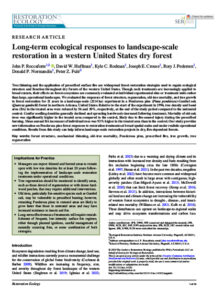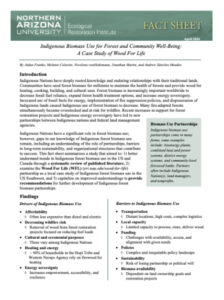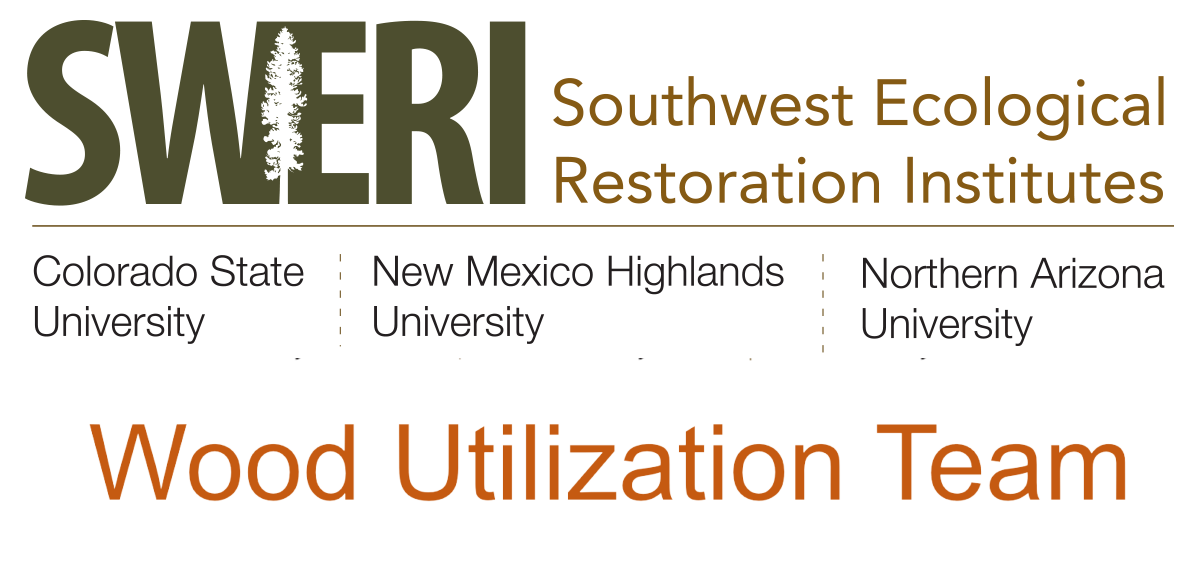
In spring 2020, the US Forest Service’s Wood Innovations Grant program awarded the SWERI Wood Utilization Team, a $260,000 grant to lead a Wood Utilization Team across three states. The team will focus on increasing forest restoration efforts through the expansion of forest product business clusters in the Southwest.
With this funding, the team plans to build on the research and development infrastructure of three university-based research units that comprise the Southwest Ecological Restoration Institutes, or SWERI—the New Mexico Forest and Watershed Restoration Institute, the Colorado Forest Restoration Institute and the ERI at Northern Arizona University—to support the expansion of forest product business clusters through focused workshop training events, applied research studies, and forest product marketing efforts.
Across the Southwest, projects that thin and remove small-diameter trees to restore forest health and prevent catastrophic wildfire are often hindered by a lack of markets for the low-value wood and biomass needed to fund operations. For several years, the Forest Service, industry partners, ecologists, and stakeholders have worked to overcome this barrier to reinvigorate the regional forest products industry and spur forest restoration efforts.
“Funding from the Forest Service’s Wood Innovations Grant program allows us to creatively grow the forest products industry sector and associated markets, which in turn supports forest restoration activities in the Southwest,” said Dr. Han-Sup Han, director of ERI’s forest operations and wood utilization program.
To learn more about the 2020 Forest Service’s Wood Innovations Grants, click here.
And, check out this NAU News story, which details the SWERI Wood Utilization Team project, its team members and project goals.
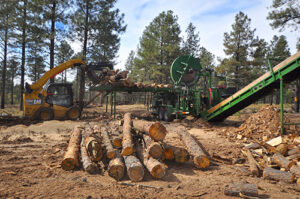

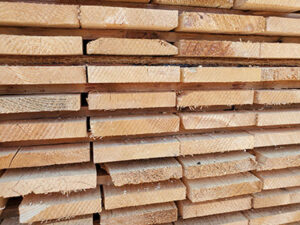
Long-term ecological responses to landscape-scale restoration in a western United States dry forest
Tree thinning and prescribed surface fire are common forest restoration strategies in the dry forests of the western United States. These treatments are often assessed at small scales rather than across large areas. This study evaluated forest structure, regeneration, old-tree mortality, and tree growth over 21 years in a large (2114 ha) Ponderosa pine-Gambel oak forest in northern Arizona. By the end of the study, tree density and basal area in the treated area were reduced by 56% and 38%, respectively, compared to the untreated control. Conifer seedling densities generally declined while hardwood sprouting increased post-treatment. Old oak tree mortality was higher in the treated area, likely due to fire injury. The mean annual basal area increment of individual trees was 93% higher in the treated area than in the control. These findings offer valuable insights for large-scale restoration efforts in dry, fire-dependent forests.
Return on investments in restoration and fuel treatments in frequent-fire forests of the American west: A meta-analysis
Arid forests in the American West are overly dense and need fuel reduction and fire regime restoration. Forest restoration efforts, such as thinning and prescribed burning, aim to reduce wildfire risks. Despite their importance, the cost-effectiveness of these programs is not well understood. This study conducted a meta-analysis of 120 observations from 16 studies over the past two decades to evaluate the benefits and costs of forest restoration and fuel treatments. Results showed significant variation in benefits, from enhanced ecosystem services to avoided wildfire costs. In high-value, at-risk watersheds, every dollar invested in restoration yielded up to seven dollars in benefits, achieving a 600% return on investment.

